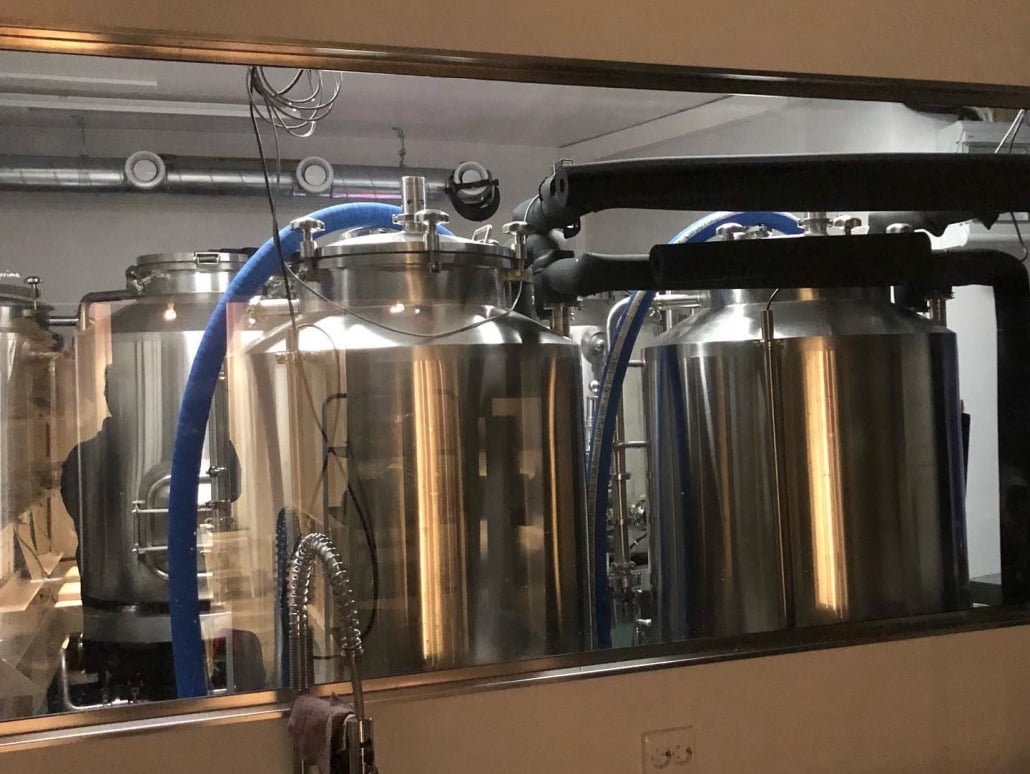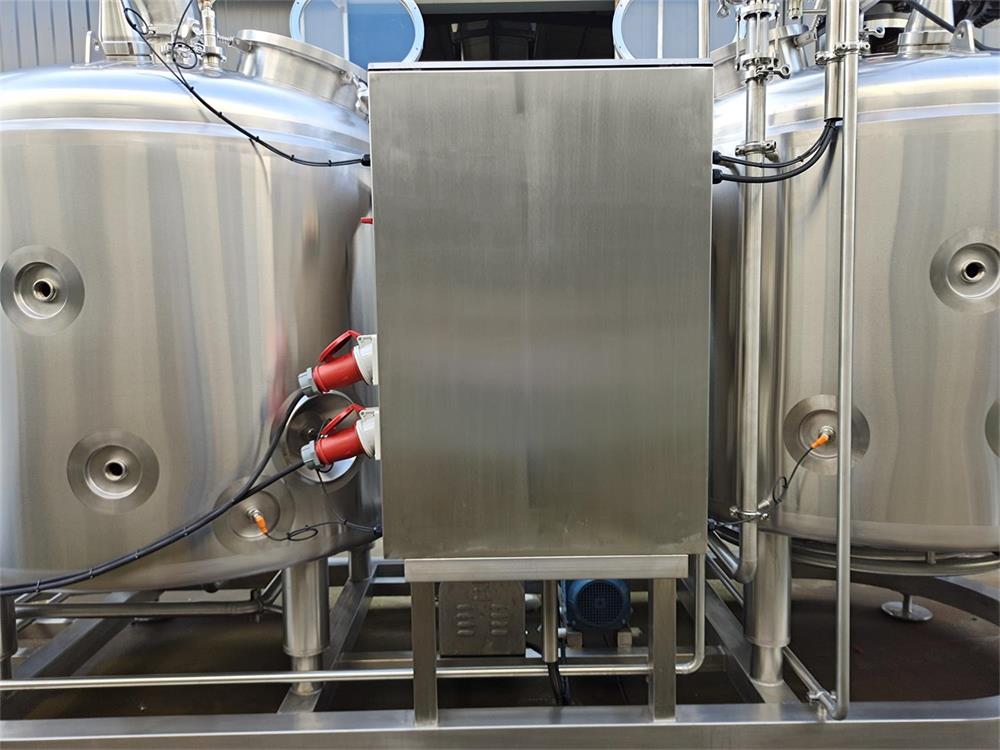Wine Tanks: An In-Depth Guide
Wine tanks are essential in the winemaking process, providing the environment where grapes transform into the delightful beverage enjoyed by many. This article delves into every aspect of wine tanks, covering types, processes, capacities, suppliers, and more. Let’s embark on this journey to understand the world of wine tanks better.
Overview of Wine Tanks
Wine tanks are specialized containers used in the fermentation and storage of wine. They come in various materials and designs, each offering unique benefits to the winemaking process. These tanks play a crucial role in ensuring the quality, taste, and aroma of the wine. Let’s explore the key aspects of wine tanks in more detail.
Types of Wine Tanks
Stainless Steel Tanks
Stainless steel tanks are the most common in modern winemaking. They offer excellent temperature control, are easy to clean, and do not affect the wine’s flavor.
Concrete Tanks
Concrete tanks provide a unique micro-oxygenation environment, which can enhance the wine’s complexity and texture.
Wooden Tanks
Traditionally used in winemaking, wooden tanks (often oak) impart distinct flavors and aromas to the wine, adding depth and character.
Polyethylene Tanks
Polyethylene tanks are lightweight and affordable. They are mainly used for small-scale or experimental batches of wine.
Hybrid Tanks
These combine materials, such as stainless steel and oak, to leverage the advantages of each type.

Present Equipment Guide
Understanding the equipment involved in wine fermentation and storage is crucial for aspiring winemakers.
Fermentation Tanks
Fermentation tanks are designed to handle the initial process where yeast converts sugars into alcohol. Temperature control and oxygen management are vital in these tanks.
Storage Tanks
Storage tanks, used after fermentation, are where wine matures. The material and design of these tanks influence the aging process.
Topping Tanks
Topping tanks are smaller containers used to top up wine in storage tanks to prevent oxidation.
Types of Wine Tanks: Equipment and Features
| Type of Tank | Material | Key Features |
|---|---|---|
| Stainless Steel Tanks | Stainless Steel | Temperature control, easy to clean, non-reactive |
| Concrete Tanks | Concrete | Micro-oxygenation, enhances complexity and texture |
| Wooden Tanks | Oak or Other Wood | Imparts flavors and aromas, traditional |
| Polyethylene Tanks | Polyethylene | Lightweight, affordable, suitable for small batches |
| Hybrid Tanks | Stainless Steel/Oak | Combines benefits of both materials |
Wine Fermentation Process
The fermentation process is critical in winemaking, where the grape juice transforms into wine through the action of yeast.
Crushing and Pressing
The process begins with crushing and pressing the grapes to extract the juice.
Fermentation
Yeast is added to the grape juice, initiating the fermentation process. The yeast converts sugars into alcohol and carbon dioxide.
Aging and Maturation
After fermentation, the wine is transferred to storage tanks for aging. The material of these tanks can influence the wine’s flavor profile.
Bottling
Once the wine has matured, it is filtered and bottled for distribution and consumption.
Capacity, Spaces, Design, and Customization
The capacity and design of wine tanks vary significantly, catering to different production scales and styles.
| Aspect | Details |
|---|---|
| Capacity | Ranges from small tanks for experimental batches to large tanks for commercial production |
| Space Requirements | Depends on the size of the operation; larger tanks need more space |
| Design | Can be vertical or horizontal; influenced by the type of wine being produced |
| Customization | Tanks can be customized with temperature control systems, mixing mechanisms, and other features |
Suppliers and Price Range
Selecting the right supplier and understanding the price range is crucial for acquiring wine tanks.
| Supplier | Price Range |
|---|---|
| XYZ Stainless Steel | $5,000 – $50,000 |
| ABC Concrete Tanks | $3,000 – $30,000 |
| Oak Barrel Co. | $1,000 – $10,000 (per barrel) |
| PolyTank Industries | $500 – $5,000 |
| Hybrid Tank Solutions | $10,000 – $70,000 |
Installation, Operation, and Maintenance
Proper installation, operation, and maintenance are vital for the longevity and performance of wine tanks.
| Aspect | Details |
|---|---|
| Installation | Requires professional setup to ensure proper fitting and function |
| Operation | Includes regular monitoring of temperature, oxygen levels, and cleanliness |
| Maintenance | Regular cleaning and inspection to prevent contamination and ensure optimal performance |
How to Choose a Supplier
Choosing the right supplier can make a significant difference in the quality and efficiency of your winemaking process.
| Consideration | Details |
|---|---|
| Reputation | Look for suppliers with a proven track record and positive reviews |
| Quality | Ensure the tanks meet industry standards and are made from high-quality materials |
| Support | Opt for suppliers who offer comprehensive support, including installation and maintenance services |
| Customization Options | Choose suppliers who can customize tanks to meet your specific needs |
| Price | Compare prices to ensure you are getting good value for your investment |
Pros and Cons of Different Wine Tanks
| Type of Tank | Advantages | Disadvantages |
|---|---|---|
| Stainless Steel Tanks | Excellent temperature control, easy to clean, durable | Higher initial cost |
| Concrete Tanks | Enhances complexity and texture, good insulation | Heavy and difficult to move |
| Wooden Tanks | Imparts unique flavors and aromas, traditional appeal | Requires more maintenance, risk of contamination |
| Polyethylene Tanks | Affordable, lightweight, easy to handle | Less durable, potential for leaching |
| Hybrid Tanks | Combines benefits of different materials | More expensive, complex design |

FAQs
| Question | Answer |
|---|---|
| What is the best material for wine tanks? | Stainless steel is widely considered the best due to its durability and ease of cleaning. |
| How do wooden tanks affect wine flavor? | Wooden tanks, especially oak, can impart distinct flavors and aromas, enhancing the wine’s complexity and character. |
| Are concrete tanks difficult to maintain? | Concrete tanks require regular cleaning but are relatively low maintenance compared to wooden tanks. |
| Can I use polyethylene tanks for all wines? | Polyethylene tanks are best suited for small batches or experimental wines due to their affordability and ease of use. |
| What are hybrid tanks? | Hybrid tanks combine materials like stainless steel and oak to leverage the benefits of both, offering versatility. |
Conclusion
Wine tanks are a cornerstone of the winemaking process, each type offering unique benefits and considerations. Whether you’re a small-scale winemaker or running a large commercial operation, understanding the types of tanks available, their features, and how to choose the right one can significantly impact the quality of your wine. From stainless steel to hybrid options, the right wine tank can enhance your winemaking process, ensuring that each bottle is a true reflection of your craft.
Share this entry
Interested in learning more about Brewing Systems including additional details and pricing information? Please use the form below to contact us!
YOLONG BREWERY EQUIPMENT FAQS
- Commercial Brewery / Craft Brewery / Microbrewery / Nanobrewery
- What is The Difference Between Craft Beer and Industrial Beer?
- The Bespoke Differences In Custom Brewing Systems
- Everything You Need to Know About Kettle Souring
- How to Choose Brewing Equipment for Your business?
- How To Choose The-Best Partner To Build Your Commercial Microbrewing System?
- Two Detection Sensors That You Need To Use In Your Brewhouse System
- Remote Control Applications in Brewing Equipment/How does it work?
- How To Clean Your Brand New Brewery Tanks?

